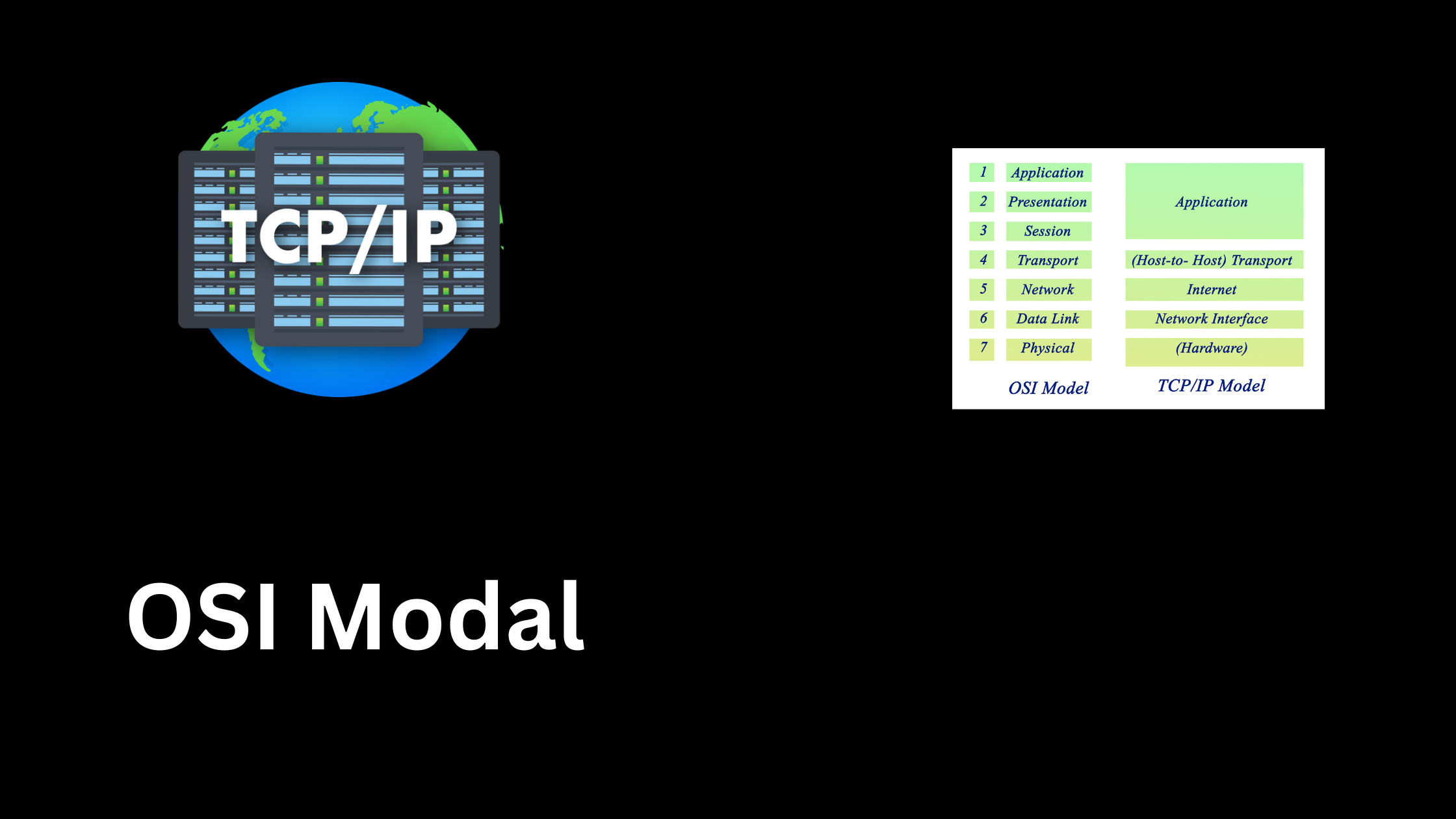OSI and TCP/IP are network models, These models help to establish proper communication between different systems.
In this article, we will learn about OSI and TCP/IP Models. First, we will start with the OSI Model
OSI (Open Systems Interconnection) Model:
The OSI model is a conceptual framework that standardizes the functions of a telecommunication or computing system into seven distinct layers.
It was developed by the International Organization for Standardization (ISO) to ensure interoperability and compatibility between different networking technologies and products. Here are the seven layers of the OSI model from bottom to top/
Think of the OSI model as a way to organize how different parts of computer networks interact. Imagine it as a seven-layered cake, with each layer serving a specific purpose

- Physical Layer: This is the lowest layer which deals with physical connection between devices like the actual cables and hardware that connect devices together.
- Data Link Layer: It’s like the postman who makes sure your messages (data) are packaged correctly and delivered without mistakes. basically, anything which works with the MAC address works with the data link layer. It is responsible for framing data into frames and ensuring reliable data transmission over the physical layer. It includes functions like error detection and correction, flow control, and addressing (MAC addresses).
- Network Layer: This layer decides how data moves between different networks and uses logical addresses (like house addresses). It handles the routing of data packets between different networks and devices using logical addressing (IP addresses). The Internet Protocol (IP) operates at this layer.
- Transport Layer: This layer ensures data arrives safely and in the right order. It includes protocols like TCP (reliable) and UDP (fast but not guaranteed). The transport layer is responsible for end-to-end communication. It manages flow control, error detection, and segmentation/reassembly of data.
- Session Layer: The session layer establishes, manages, and terminates communication sessions between applications. It is responsible for synchronization and error recovery in data exchange.
- Presentation Layer: Imagine it as a translator. This layer converts data into a format that applications can understand and handles things like encryption and compression. It is responsible for data transformation and encryption/decryption.
- Application Layer: The application layer is the topmost layer and This is where you, the user, interact with the network. It’s where all your applications like web browsers (HTTP), email (SMTP), and file transfers (FTP) live.
TCP/IP (Transmission Control Protocol) Model:
The TCP/IP model, on the other hand, is a more simplified and widely used model in practical networking. It’s the foundation of the modern internet.
Now, let’s simplify it even more with the TCP/IP model. This one has just four layers:
- Network Interface Layer: This is like the physical and data link layers in the OSI model. It deals with the physical connection, hardware addressing (MAC address), and basic data transmission.
- Internet Layer: It’s like the OSI network layer, It is responsible for routing packets between different networks using logical addressing (IP addresses). The Internet Protocol (IP) operates at this layer.
- Transport Layer: Similar to the OSI transport layer, it ensures your data reaches its destination reliably and includes protocols like TCP and UDP.
- Application Layer: The application layer is equivalent to the top three layers of the OSI model (session, presentation, and application). It handles user applications, network services, and communication with the lower layers.
4 Layers of TCP IP Modal

OSI and TCP/IP: Similarities and Differences
| TCP/IP Modals | OSI Modals |
| It was developed by ARPANET (Advanced Research Project Agency Network). | The TCP/IP model is both connection-oriented and connectionless. |
| TCP/IP is a four-layered model | OSI has seven layers |
| TCP/IP is tangible | OSI is not tangible |
| TCP/IP does not have a clear distinction between services, interfaces, and protocols | OSI distinguishes these three concepts |
| TCP/IP protocols layout standards on which the Internet was developed. | OSI model gives guidelines on how communication needs to be done, |
| TCP/IP model is both connection-oriented and connectionless. | In the OSI model, the transport layer is only connection-oriented |
